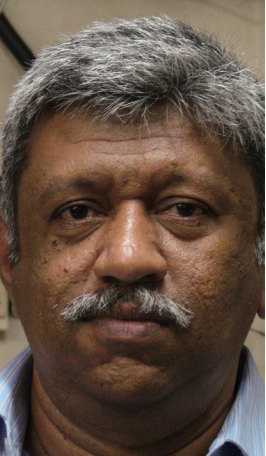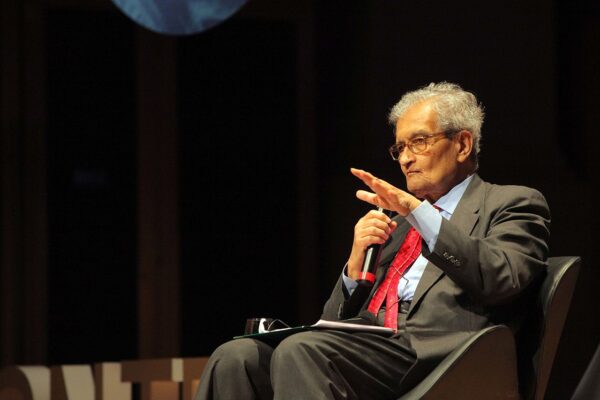By Ashok R. Chandran
Media (Kochi)
I have written in the past (‘E-groups for Scholars’, Media, February 2014) about the need for journalism educators and researchers to be part of e-communities. One such pioneering venture for Indian journalists is newspaperdesign.in, a Web community for news designers, run by Sajeev Kumar T. K. from Thiruvananthapuram. It is a website that teachers and students of news design too will find useful.

Sajeev Kumar began his career in Kerala Kaumudi in 1994 as a sports reporter. His special interest in design led to him becoming the Page One editor in 2005, and later the Visual Editor. Since 2012, he has been Film Editor, and editor-in-charge of Flash Movies, a film magazine in Malayalam from the Kaumudi stable.
In an e-mail interview, Sajeev Kumar tells us about the activities of Society for News Design (SND) in India, the Web community he manages, and the design scene in Kerala.
ARC: Congratulations on being re-appointed Regional Director of SND Asia–Pacific. SND is the pre-eminent, international network in your profession. How has your participation in it helped you become a better news designer?
SKTK: It has given me a lot of opportunities to interact with great designers around the world. This helped me to redesign my newspaper Kerala Kaumudi thrice.
What are your plans for SND in South Asia, especially India? Is there an active India chapter with designers, educators, and students?
So far, I have conducted two news design conferences in India: the first one at Delhi in 2012 and the second one at Mumbai in 2014. These conferences were conducted in association with WAN-IFRA [World Association of Newspapers and News Publishers] since SND is a non-profit organisation. As the regional director of SND, I was able to bring top-class designers and educators to the conference. This month [January 2015] SND will conduct an information graphic workshop in Chennai in association with WAN-IFRA.
As you know, from an Indian point of view, it is difficult to participate in the SND’s Annual International news design competition because of the entry fee and the postal charges. In 2013, due to my strong recommendation in the Board meeting, SND decided to enter some of the best entries from India through sponsorship. For that, I conducted a regional competition, and 10 entries from India were picked for the international competition.
As of now, I use my site www.newspaperdesign.in as a link between SND and the Indian designers. There are more than 550 Indian designers as members in my site. I am planning to bring out an SND newsletter for the region.
In India, you have been doing stellar work through your newspaper design website. What prompted you to set up such a community website? Have those goals been met?
During 2000–2001 I got attracted to a website called www.visualeditors.com, which was run by the well-known design consultant Robb Montgomery. It was a specialised site for news designers and visual editors. But after a few years, Robb shifted his focus to other fields like video and mobile journalism. Then I started thinking of a website similar to that, which would be helpful for Indian designers. And thus newspaperdesign.in was born.
I think my site not only effectively provides useful and creative information to Indian designers, but also gives them a platform to showcase their work. I think it will be a complete success when they use it effectively in their work.
You conducted a news design competition. And you regularly post a lot of useful stuff to the website’s Forum. Last year, out of the 62 posts initiated in the Forum, only 3 were by other members. This is a website community of 650+ members. Why is the number of contributors so low? Is it that you are a dictatorial editor who ‘rejects’ others’ contributions? Seriously, what (in your understanding) is preventing peers from discussing their own work or that of others?
So far I have conducted three international competitions with more than 250 newspapers around the world participating in them.
The website is an open venue. I delete only spam posts. I want to point out the fact that my site is an interactive site, open to discussions and opinions, which means, non-dictatorial. To make the site active, I regularly post interviews, news, discussions, job vacancies, and so on.
How much time does it typically take for you to prepare and publish one post in the website’s Forum? Scouting, selecting, editing, publishing, everything included.
I spend a minimum of two hours a day.
I guess it’s difficult to measure the impact of your website on the industry. Have community members written to you saying how your website has improved their work? Or is running the website a thankless job? Please give us an idea of how many visited the website in 2014, or visit typically in a month or year.
As you know, traffic is always dependent on the nature of the post. That is not my focus. The site is entering its seventh year in the Web world. You can see that there are no private advertisements or Google Ads anywhere on the site. Also, I do not charge the members a fee. It is running only because of my interest in news design and the interest of some similar-minded people. It is a classroom for me.
Bollywood cinema is different from Hollywood in some ways. Similarly, is there an ‘Indian’ or ‘desi’ style in newspaper design that you have noticed?
Certainly, every continent has its design culture. But we cannot fool a reader with design alone. Design is only an element to bring the reader into the story. Content is the King.
We have a design culture which is entirely different from the United States and Europe. Ours is the only country where designers use a lot of colours. It is very much a part of the culture. For the past few years, our national dailies have been giving more emphasis to design. Compared to other parts of the world, the Indian newspaper industry is driven by readers. There have been many instances where newspapers have had to drop their new designs because of negative feedback from readers. Our readers need more stories to read. That’s why even leaders like Times of India and Hindustan Times compete to include maximum items on page one. So, there is little scope for design on page one. Many of them follow a fixed template. This is where we can try out alternative story forms (ASF). ASF can enhance design without wasting space.
Let me turn to the scene in Kerala. Are you aware of news design research on Malayalam newspapers, by academics or newspapers (in-house studies)? Even within journalism studies, news design seems to be hardly researched here. Why is it so?
We have to educate our editors first. Many editors are unaware of the basics of design. Designing is not merely a waste of space or luxury. It creates an entry point for readers.
Despite there being very little research on news design of Kerala newspapers, news design is being taught in almost all journalism courses in Kerala. Where do those who teach get their teaching materials and ideas from?
It is easily available on the Internet. But we have to make an effort towards exploring and using ideas which are relevant for us. Another way is to communicate and discuss it with well-known designers or visual editors all around the world. Poynter Institute, a U.S. institute, provides online training with scholarship for interested and talented people. But first, we have to set a design syllabus.
Our dependence on Western material suggests that principles of news design are universal, that is, the news design principles are the same, be it in the United States, Scandinavia, or India. If so, is there really a need for researching news design in Malayalam journalism?
I don’t think we need to do research on news design. It is our mindset which has to change. Nowadays, Malayala Manorama devotes a lot of space for infographics. That is a welcome change. Change does not happen quickly. It takes time. On big occasions and for big events, our newspapers give designers more freedom these days.
Web extra
Links were added in this web version.
Credits: Photo ‘Blue Stairway to Heaven’ by Lindsey LaMont on Unsplash; Sajeev Kumar T. K.’s photo by special arrangement.
Updated: July 2022.




